Enabling Safe Human and Robot Collaboration with Blue Danube Robotics
Key Takeaways:
- Blue Danube Robotics chose the Carbon DLS™ process for the wide range of materials available and level of accuracy achievable to create customized elastomeric sensor pads, wiring harnesses, and brackets for its AIRSKIN® technology models
- Using Carbon elastomeric polyurethane EPU 41, EPU 40, and rigid UMA 90 materials, Blue Danube Robotics was able to create a variety of parts for their AIRSKIN models that met the mechanical performance required
- With Carbon, Blue Danube Robotics was able to reduce time to design and produce a custom part piece from one week to one day
With the mission to create safe human-robot collaboration in mass production, Blue Danube Robotics is constantly looking for ways to upgrade standard industrial robots to fenceless collaborative applications. Fenceless applications enable human workers and robots to collaborate on tasks while maintaining the necessary safety. Through sensors, robots can automatically turn off when a safety hazard is detected, helping to streamline the workflow and reduce unnecessary downtime.
Based in Vienna, Austria, the company produces add-on safety sensor solutions for robots to make medium-sized and large companies more efficient and productive while also prioritizing safety precautions.
The patented AIRSKIN® technology by Blue Danube Robotics is a sturdy, pressure-sensitive skin directly mounted onto standard industrial robots. What makes AIRSKIN exceptional is its ability to be customized to robots with many different sizes, shapes, and functions. More than just a skin, the solution offers palletizing, visual inspection, and machine tending applications that help different customers find the best fit for their robots. AIRSKIN works to provide for all types of circumstances by creating a more efficient workplace everywhere.
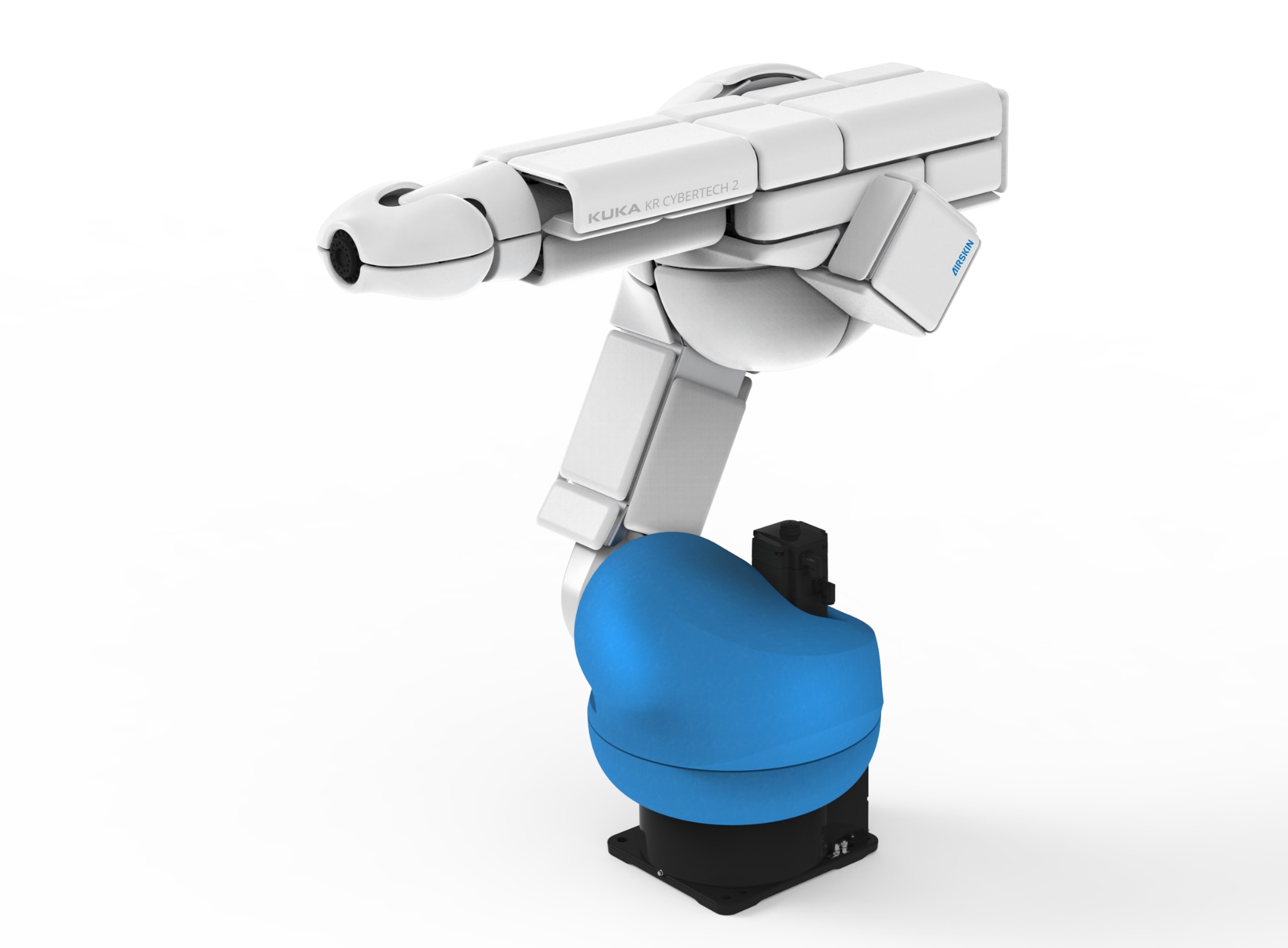
CHALLENGE:
Creating easy to clean, customized parts
Early prototypes of AIRSKIN models were made using various processes and materials, including shaped open-cell foam coated with polyurethane, and roto-casted shells later filled with open-cell foams.
Blue Danube Robotics surveyed the 3D printing market for years and tested out more than 20 different printer manufacturers and part producers to produce the different parts of the AIRSKIN model. Given that every AIRSKIN model for each client is different, Blue Danube Robotics wanted a manufacturing method that would allow for low-volume custom production of each piece.
Blue Danube Robotics worked with Selective Laser Sintering (SLS) to create AIRSKIN models before exploring the Carbon Digital Light Synthesis™ (Carbon DLS™) process to print pads of AIRSKIN.
While SLS worked well for creating larger parts, Blue Danube Robotics found Carbon DLS technology to be perfect for designing and producing smaller pad sensors and various additional parts used in the AIRSKIN model, including mounting brackets, magnet holders, and cable clips. Blue Danube Robotics found that SLS materials were not elastic enough to create tiny parts. Removing dust residue in SLS parts during the cleaning process was often complicated or impossible.
SOLUTION:
Achieving a high level of accuracy and consistency
The production process for an AIRSKIN model involves the creation of multiple part groups, including the large pads on the outside, the support structure (support layer) on the robot, the cabling, and mounting.
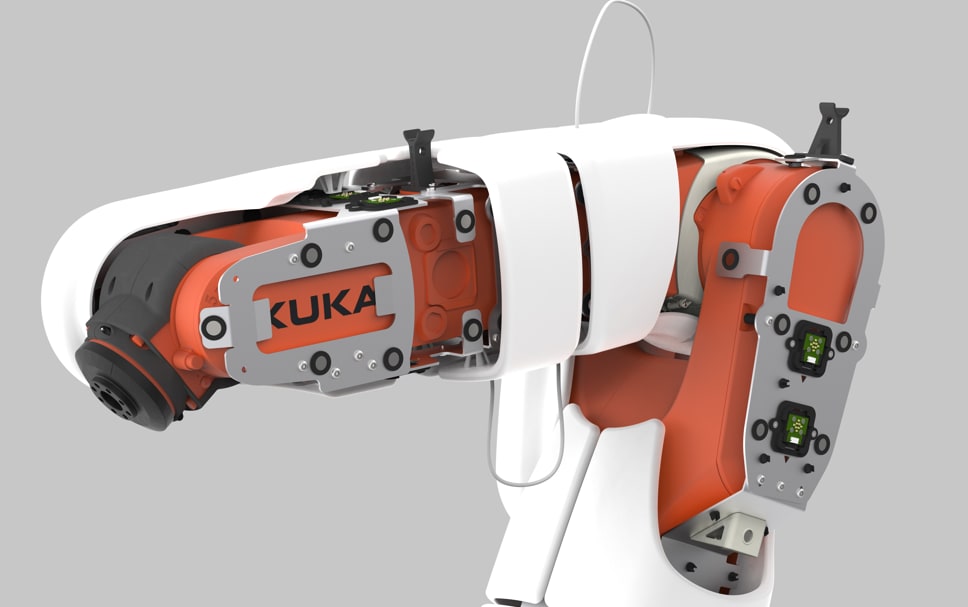
The various mounting brackets that support the placement of the pads on the robot area are a vital component of the AIRSKIN model. To successfully create a perfect fit for moving robots, all of these components must be designed together. While Blue Danube Robotics aims to use standardized parts for production, new parts often need to be created due to the customization required.
Using Carbon DLS, Blue Danube Robotics achieved the accuracy needed in the complex components of parts. In particular, the small sensors for AIRSKIN require a wall thickness of 0.8–0.9 mm to allow them to detect forces about 0.5 newtons (50 g)—a requirement that wasn’t possible to meet with other 3D technologies.
For the various AIRSKIN part components to clip together, a perfect fit is essential. Blue Danube Robotics needed to ensure that they could easily clean parts to maintain the integrity and functionality of the piece. When using SLS, Blue Danube Robotics found dust residue on parts even after the cleaning process, which affected part fit. Carbon DLS technology produces parts with a superior surface finish, allowing Blue Danube Robotics to create parts with a perfect fit consistently.
Additionally, Carbon software allowed Blue Danube Robotics to make quick and easy modifications to custom parts during the design and production. Instead of having to recreate the different parts from scratch after each testing process, Blue Danube Robotics could make edits directly on the most recent design of parts.
Materials to support different part needs
The wide array of 3D printing materials available in the Carbon material portfolio allowed Blue Danube Robotics to explore many options for creating the various part components in AIRSKIN. After extensive testing between Carbon materials and other 3D materials, Blue Danube Robotics chose to use Carbon EPU 41, EPU 40, and UMA 90.
For AIRSKIN pads, Blue Danube Robotics required high resiliency and needed a material that had strong flexibility, along with sufficient tear resistance to withstand an industrial environment. Carbon EPU 41, a highly elastic, tear-resistant, and energy-returning elastomeric polymer, met all of Blue Danube Robotics’ criteria.
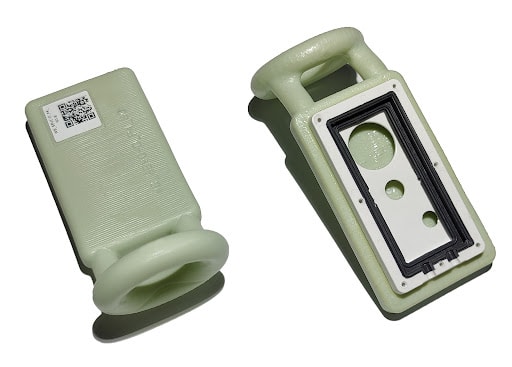
For the AIRSKIN cable mounting for industrial robots that provide cable routing from the controller to the tool attached to the robot, Blue Danube Robotics needed a flexible and strong material to support zip tie holes in the design. Blue Danube Robotics selected Carbon EPU 40 for its material properties similar to EPU 41 and black color option.
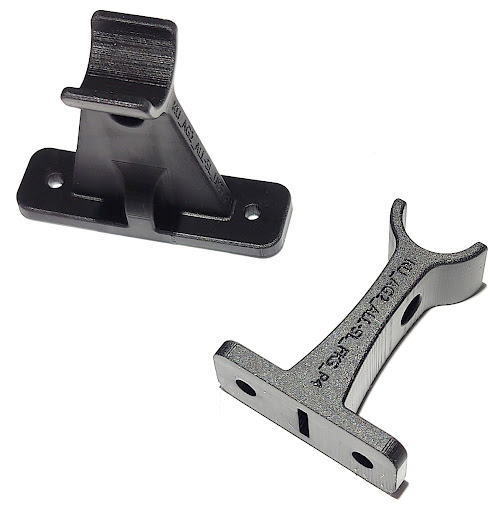
Blue Danube Robotics selected Carbon UMA 90 material, a one-part resin, for the mounting brackets, for its ability to print multiple parts at the same time quickly. The characteristics of UMA 90 allowed Blue Danube Robotics to iterate swiftly through part designs to optimize for easy cleaning and post-processing.
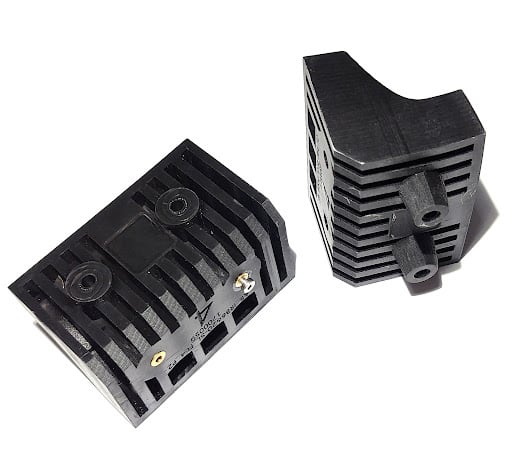
Streamlining customizable low-volume production
Managing the customization required for each order is one of the most challenging parts of the production process for AIRSKIN, making it crucial for Blue Danube Robotics to find a technology that allowed for flexible and scalable low-volume custom production. The Carbon DLS process and Carbon M2 3D printer enabled custom pieces to be printed at low volumes and helped speed up the development process significantly.
It took Blue Danube Robotics up to a week to design and produce a custom part piece with other technologies. Using the Carbon DLS process allowed Blue Danube Robotics to deliver parts in one day, for greater customer satisfaction and the increased compatibility of robots with Blue Danube Robotics’ AIRSKIN technology.
“Working with Carbon DLS technology and the high-quality materials available through Carbon allowed us to optimize the production of our AIRSKIN technology and helped us to achieve the requirements for specific pieces. Carbon is helping to enable the future of fenceless collaborative applications through the ability to create better designs in less time.”
ANDREAS BALDINGERCEO, AIRSKIN
RESULTS:
With Carbon DLS technology, Blue Danube Robotics can provide rapid prototyping in-house and quickly produce custom parts for industrial products to help achieve the goal of accelerating a broad range of fenceless applications for robotics. Blue Danube Robotics continues to create parts with a perfect fit and consistently looks for ways to integrate Carbon technology in new applications after the successful collaboration in producing the AIRSKIN model.
3D as It’s Meant to Be
Interested in utilizing Carbon to accelerate product development? Reach out to us at sales@carbon3d.com to learn more!
